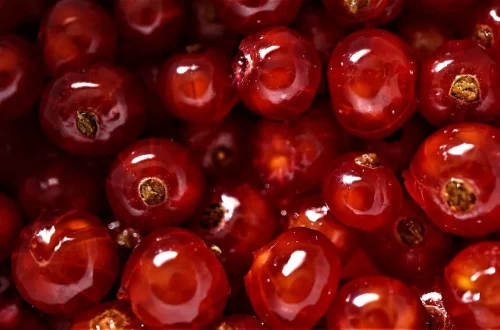
The Ultimate Guide to Men’s Combs for Every Hair Type and Style
Men’s grooming has evolved significantly over the years, transforming from a simple routine into a vital aspect of personal style and self-care. A well-groomed appearance not only boosts confidence but also enhances one’s overall presence. Among the various grooming tools available, combs play an essential role in achieving the desired hairstyle. They come in various shapes, sizes, and materials, tailored to meet the diverse needs of different hair types and styles.
Understanding the right comb for your hair type can make a significant difference in your daily grooming routine. Whether you have thick, curly locks or fine, straight strands, the right comb can help you manage your hair better. Combs are not just practical tools; they also contribute to the overall aesthetic of your look. When chosen wisely, they can complement your style and express your personality.
In the world of men’s grooming, the comb is often underestimated. However, it is a small yet powerful tool that can help you achieve the perfect hairstyle, maintain your hair’s health, and even make styling easier. With a plethora of options available, it’s crucial to understand the differences and find the ideal comb that suits your hair type and lifestyle.
Understanding Different Hair Types
To choose the right comb, it’s essential to first understand the different hair types. Hair can be categorized into several types based on texture, thickness, and curl pattern. The primary hair types include straight, wavy, curly, and coily. Each of these categories has unique characteristics that influence how they should be styled and maintained.
Straight hair typically lies flat and has a smooth texture. It is often shiny and can be prone to oiliness, making it essential to choose a comb that helps distribute oils evenly. A wide-tooth comb can be beneficial for detangling straight hair without causing breakage.
Wavy hair falls between straight and curly, often having a natural bounce. This hair type can benefit from a comb that enhances waves without disrupting their formation. A paddle comb is an excellent choice for wavy hair, as it can help smooth out any frizz while maintaining the hair’s natural texture.
Curly hair is known for its spiral shape and volume. This hair type often requires more moisture and specific styling techniques. A wide-tooth comb is ideal for detangling curls without disturbing their shape. Additionally, combs made from materials like wood or silicone can help reduce static and frizz.
Coily hair is characterized by tight curls or kinks. This hair type is often the most fragile and requires gentle handling. A detangling comb with wide, rounded teeth can help minimize breakage. It’s also advisable to comb coily hair when it’s wet and conditioned to prevent damage.
Understanding your hair type is the first step in selecting a suitable comb. Each hair type has unique needs, and using the right tools can significantly improve the health and appearance of your hair.
Choosing the Right Comb Material
The material of a comb can greatly influence its effectiveness and suitability for different hair types. Combs are commonly made from plastic, wood, metal, and even rubber. Each material has its advantages and disadvantages, which can impact your grooming routine.
Plastic combs are widely available, affordable, and come in various shapes and sizes. They are lightweight and easy to carry, making them a popular choice for everyday use. However, plastic combs can create static electricity, which may lead to frizz, especially in fine or curly hair. When choosing a plastic comb, opt for one with rounded teeth to minimize hair breakage.
Wooden combs, on the other hand, are often preferred for their natural anti-static properties. They glide smoothly through the hair, reducing frizz and static electricity. Wooden combs are particularly beneficial for curly and coily hair types, as they help maintain moisture and enhance the hair’s natural texture. Additionally, they are durable and can last for years with proper care.
Metal combs are less common but can be ideal for certain styling needs. They provide a sleek finish and are often used for precision styling, such as parting hair or creating sharp lines. However, metal combs can be harsh on the hair, so it’s essential to use them carefully, especially on fragile hair types.
Rubber combs are designed to be flexible and gentle on the hair. They are often used for detangling and can help reduce breakage. Rubber combs are particularly useful for thick or curly hair, as they can navigate through tangles without causing damage.
When selecting a comb, consider the material that best suits your hair type and styling needs. The right comb material can enhance your grooming routine and contribute to healthier, more manageable hair.
Combs for Styling Versatility
In addition to detangling and maintaining hair health, combs are also essential for styling versatility. Different styles require different combs to achieve the desired look, whether you’re going for a classic slick-back, a modern pompadour, or a casual textured look.
For a classic slicked-back hairstyle, a fine-tooth comb is often the best choice. This type of comb allows for precise control, helping to create clean lines and smooth finishes. It’s ideal for short to medium-length hair and can be used with pomades or gels for added hold.
When creating volume or texture, a wide-tooth comb or a teasing comb can be particularly useful. A teasing comb has a fine-toothed section designed specifically for backcombing, which adds volume at the roots. This technique is perfect for styles that require height and body, especially in longer hair.
If you’re looking for a more relaxed, tousled style, a rake comb or a paddle comb can be beneficial. These combs help to separate hair strands without disrupting their natural texture. They work well with styling creams or sea salt sprays to enhance waves and curls, providing a laid-back, effortless look.
For those with longer hair, a vented comb can also be a good choice. This type of comb features spaced-out teeth that allow air to flow through while blow-drying, helping to reduce drying time and create volume. It’s ideal for styling long hair, as it prevents tangling and breakage.
Ultimately, the choice of comb for styling depends on the desired outcome and hair length. Understanding the different comb types and their uses can enhance your styling routine and help you achieve various looks with ease.
Caring for Your Combs
To ensure your combs remain effective and hygienic, proper care and maintenance are essential. Combs can accumulate product buildup, oils, and dirt over time, which can affect their performance and the health of your hair.
Regular cleaning is crucial. For plastic and metal combs, a simple wash with warm soapy water is usually sufficient. Use a soft brush or cloth to remove any buildup between the teeth. Rinse thoroughly and let them air dry. Avoid using harsh chemicals, as they can damage the comb material.
Wooden combs require a bit more care. To clean them, use a damp cloth to wipe down the surface and remove any dirt. Avoid soaking wooden combs in water, as this can cause warping or splitting. Occasionally, applying a light coat of mineral oil can help maintain the wood’s condition and prevent it from drying out.
If you notice any hair stuck in the comb teeth, use a fine-toothed comb or a toothpick to carefully remove it. This will help maintain the comb’s performance and prevent any tangling when using it on your hair.
Storing your combs properly is also important. Keep them in a dry place, away from direct sunlight, to prevent warping or fading. Using a comb case can protect them from damage and keep them organized.
By taking care of your combs, you can extend their lifespan and ensure they continue to serve you well in your grooming routine.
In conclusion, understanding the various aspects of combs — from hair types to materials and styling versatility — can help you make informed choices that enhance your grooming routine. The right comb is more than just a tool; it is an essential part of achieving your desired look while maintaining the health of your hair.
**Disclaimer: This article is for informational purposes only and does not constitute medical advice. For any health-related issues, please consult a qualified healthcare professional.**




